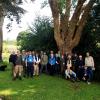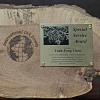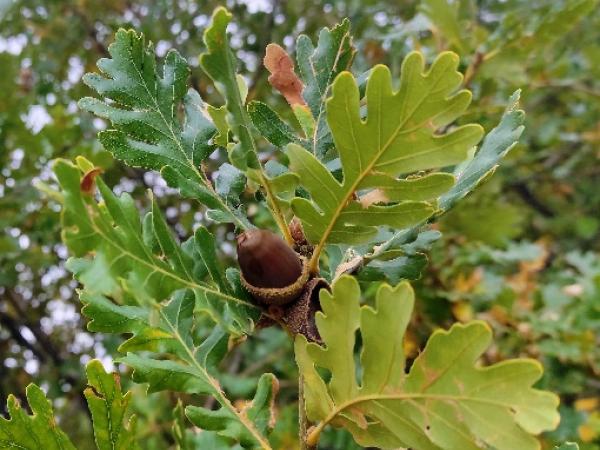Editor's Picks
Plant Focus
Quercus skinneri is a Central American oak, distinguished by the large size of its fruit, perhaps the largest of section Lobatae and comparable to Q. insignis (a section Quercus species). A specimen collected by Theodor Hartweg at Quezatlenango, Guatemala was noted and illustrated by Bentham in 1841 in The Gardener’s Chronicle and described the following year in his Plantas Hartwegianas. Early commentary focused on the unusual fruit, said to have the appearance of an acorn but the internal structure of a walnut, in reference to the intruded septa that project into the acorn. Bentham named it after George Skinner1, who was the first to discover the species and send it to England. A number of large-fruited oaks are currently considered synonyms of Q. skinneri (Q. chiapasensis, Q. grandis, Q. salvadorensis, Q. trichodonta, and Q. hemipteroides), but this list may be subject to revision, as some of the species are distinguished by morphological characteristics and distribution.
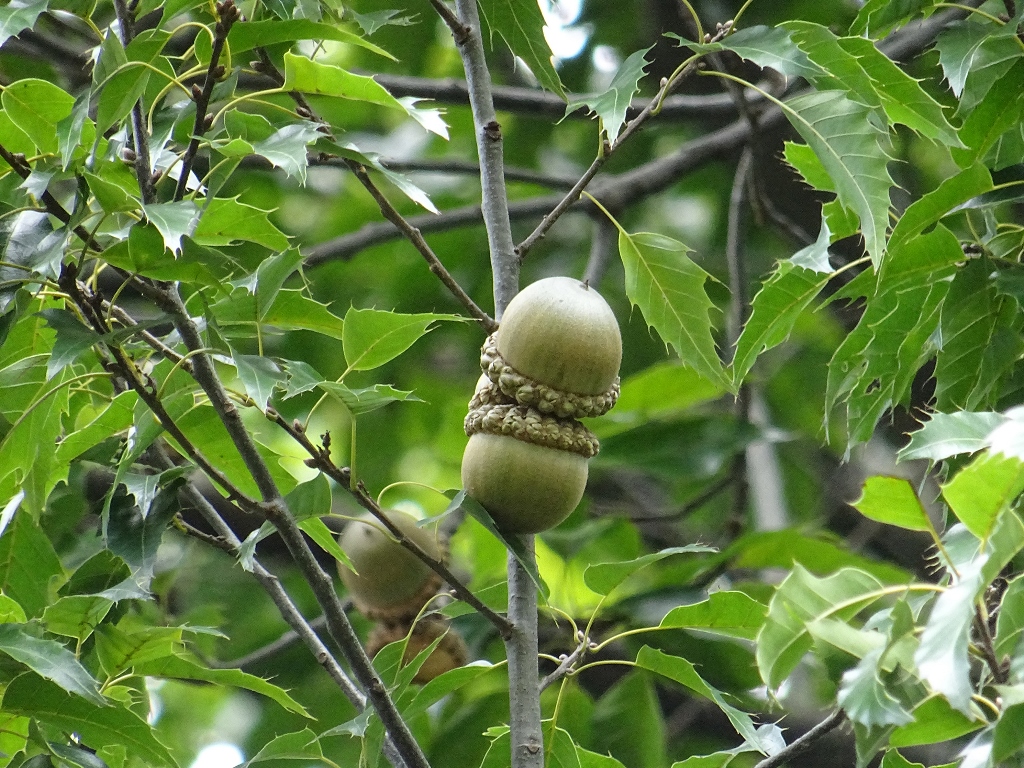
Description
Bark somewhat smooth, slightly furrowed on mature trees; twigs glabrous, reddish, with conspicuous pale lenticels; buds glossy brown, glabrescent, ovoid, 2 mm in diameter, with linear stipules that soon fall. Young leaves densely covered with deep red pubescence, mature leaves thin or slightly leathery, elliptical to ovate, 7.5–25 (–30) cm long × 3–12 (–15) cm wide, apex attenuated to acuminate, aristate, inequilaterally obtuse but shortly decurrent at base, margin with 10–13 aristate teeth on each side, with bristles 5–10 mm long, upper surface and underside green and glabrous, petiole up to 35 mm or more, thin. Male catkins with few flowers, though on some specimens up to 40 flowers, about 7 cm long, female catkins about 5 mm long, with 1–2 flowers. Fruit biennial, solitary or paired on a stalk 5–15 mm long; cup saucer-shaped, very large, 30–45 mm in diameter and 15–20 mm high, with appressed, blackish and strongly tuberculate scales, especially on the edge; acorns short-ovoid, up to 5 cm long × 5 cm in diameter, thick-walled with intruded septa, covered at the base only.

In my view, this is the correct description of Quercus skinneri, the one that most closely resembles the description published by William Trelease in The American Oaks. Others vary in the size of the cupule and the acorn, or the base of the leaf, which can be truncated or obtuse, etc. I think this is due to the fact that other species may have been included in Q. skinneri in the past. For example, plants now known as Q. meavei may have been previously identified as Q. skinneri; similarly, Q. trichodonta has been considered to be a synonym of Q. skinneri, but in my opinion it should be recognized as a valid species, following C.H. Muller (1950). Quercus grandis may also be a good species and deserves further study: the pubescence of the young leaves is snowy white, unlike the intense red of Q. skinneri. As for Q. chiapasensis, its leaves are very short, about 5 × 12 cm and borne on shorter petioles, and the cupules can be large, up to 45 mm in diameter. Quercus salvadorensis appears to have smaller acorns, with cupules that lack thickened scales.
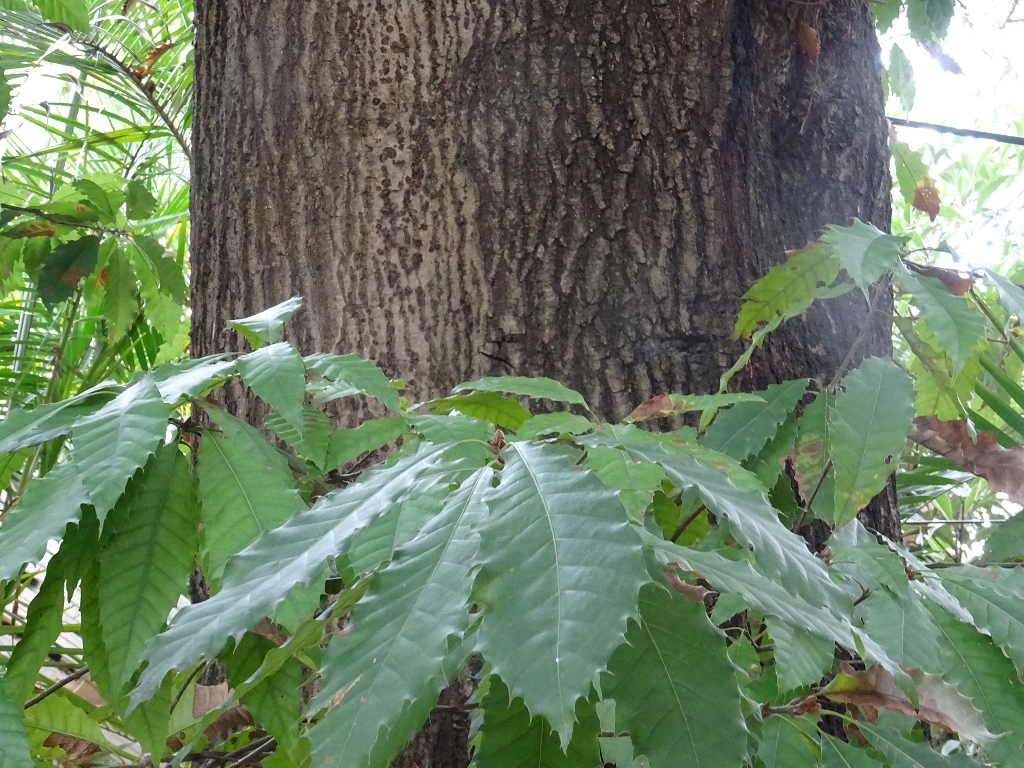
Distribution
As regards distribution, Q. skinneri is usually described as occurring in southern Mexico (Chiapas, Guerrero, Hidalgo, Oaxaca, and Veracruz), El Salvador, Guatemala, Honduras, and Nicaragua. Some of the occurrences reported for Mexico may correspond to other species, such as Q. meavei, Q. trichodonta, Q. chiapasensis, and sometimes Q. xalapensis. It is really described from Guatemala and the occurrences in that country correspond to the authentic Q. skinneri, but it should be said that it is only found in the mountains of the Pacific watershed of this country; the mentions in other locations in Guatemala are from cultivated specimens, such as I have seen in Guatemala City and Lake Atitlán.
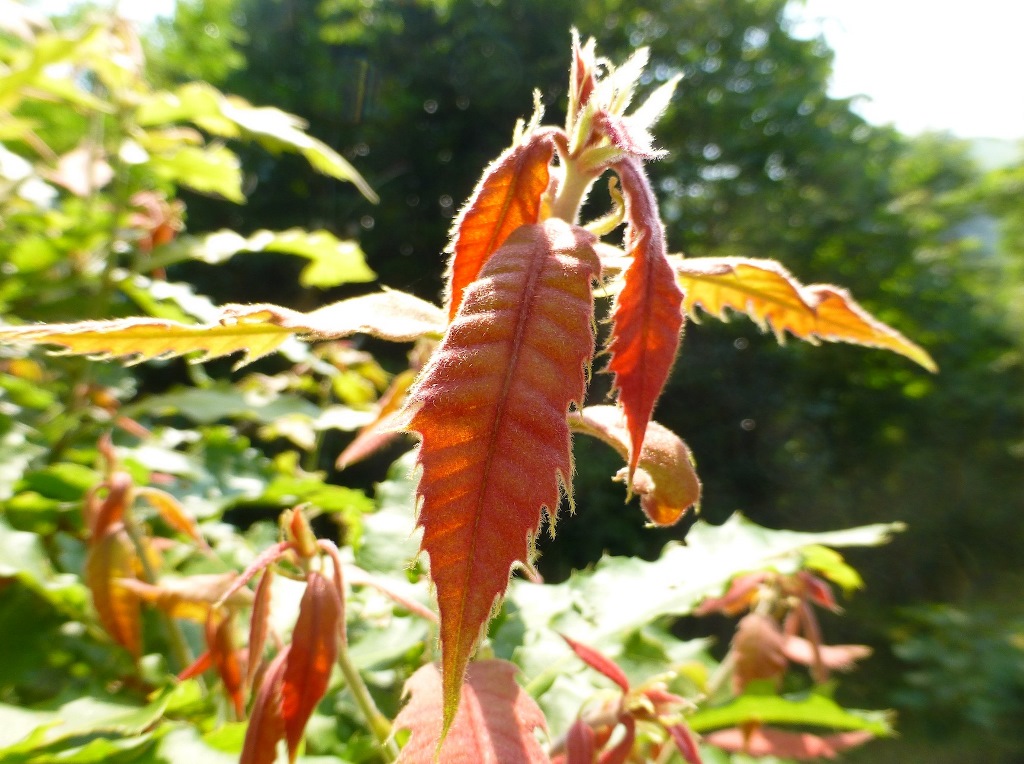
It is possible that it is found in Honduras and El Salvador. The description given in José Luis García’s Ph. D. thesis on the oaks of the Uyuca Mountains, Honduras (García 1998) agrees with that of Q. skinneri. In both countries the species may coexist with other similar ones, such as Q. grandis and Q. salvadorensis.

References
Bentham, G. 1841. A New Oak, The Gardener's Chronicle (1841). London.
Bentham, G. 1839–1857. Plantas Hartwegianas: Imprimis Mexicanas Adjectis Nonnullis Grahamianis Enumerat Novasque. London
García, M. 1998. Caracterización dendrológica y ecológica del género Quercus L. en el bosque de la Montaña de Uyuca. (PhD thesis). Zamorano.
Muller, C.H. 1950. Contribution to the Oak Flora of Central America, Madroño, 10 (5): 129–139
Trelease, W.L. 1924. The American Oaks. Memoirs of the National Academy of Sciences. 20: 1-255.

1 George Ure Skinner (1804–1867) was a Scottish businessman, diplomat, and amateur botanist. He was a merchant in Leeds and co-founder (1830) of the trading firm of Klee, Skinner and Co. in Guatemala, which quickly became one of the most important businesses in the country. Skinner was interested in natural history and sent specimens of birds and insects to the Natural History Museum at Manchester. A student, J. Bateman, saw his material and wrote asking if Skinner would send orchids. This was the basis of a partnership which would result in the collection and description of a great many orchids and other plants. Live material sent to the company of Veitch & Son was so prolific that a whole hothouse was dedicated to Central American orchids collected by Skinner. His collections spanned almost four decades, but during his last expedition to Panama he caught yellow fever and died the day before his planned return to England. Cattleya skinneri Bateman was based on his discovery in Guatemala and later designated the National Flower of Costa Rica (1939). Material of the genus Lycaste Lindl. was first discovered by Skinner and Lycaste skinneri Lindl. is now the National Flower of Guatemala. The genus Uroskinnera Lindl. in the Scrophulariaceae was also named in his honor. (Source: Global Plants, JSTOR)

and sent to his friend Sir William Hooker, preserved at the Kew Herbarium
http://specimens.kew.org/herbarium/K000512976

